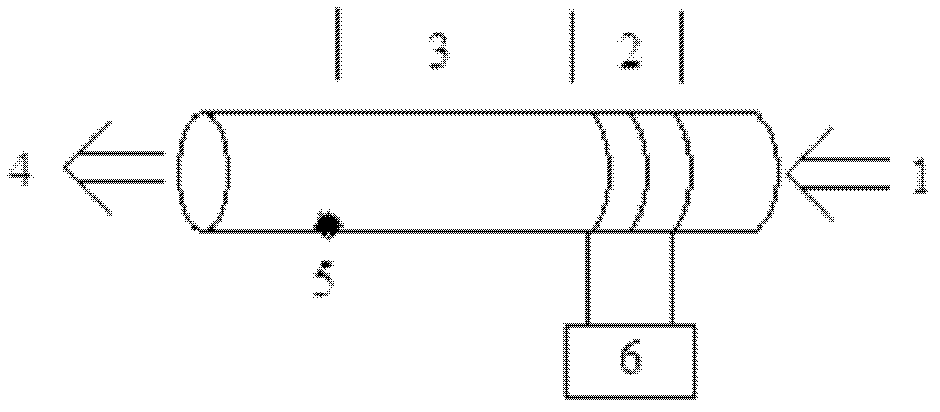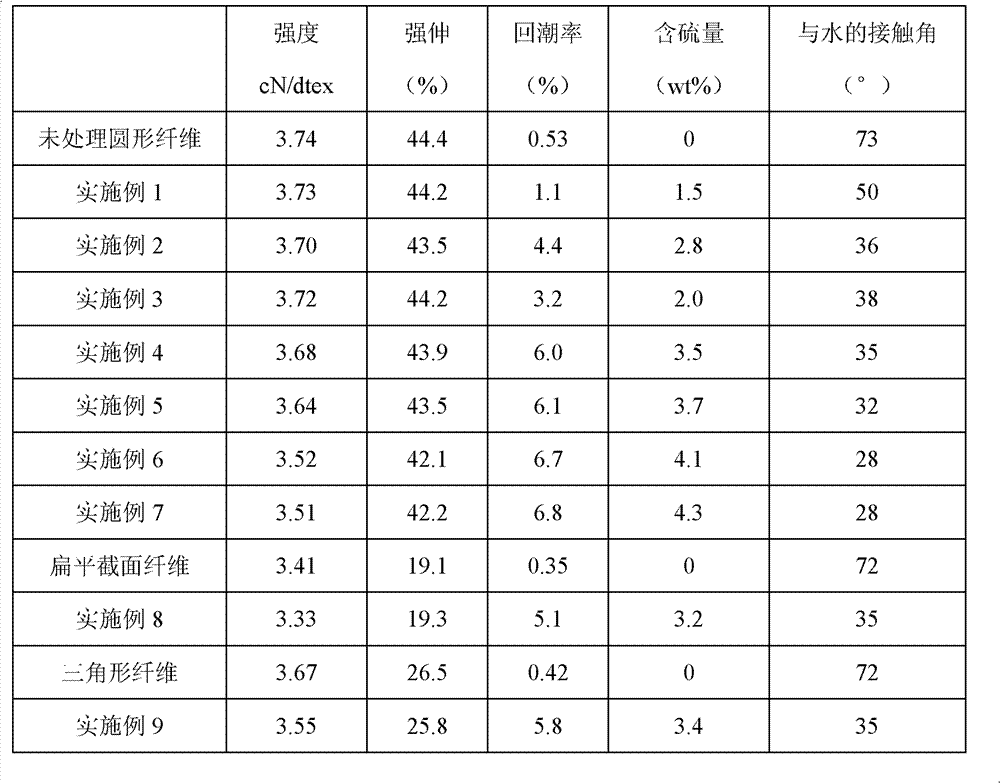Method for performing surface modification of polyester filaments by remote plasmas
A remote plasma and surface modification technology, applied in the field of ion one-step surface modification, can solve problems such as material performance degradation, and achieve the effect of short processing time and wide range
- Summary
- Abstract
- Description
- Claims
- Application Information
AI Technical Summary
Problems solved by technology
Method used
Image
Examples
Embodiment 1
[0031] Place the polyester FDY fiber with a circular cross-section of 73dtex / 192f in the downstream direction of the airflow 5cm away from the plasma discharge area, and pump the plasma to a vacuum of 1×10 -2 Pa, with oxygen as the carrier gas, sulfur dioxide as the modified gas, and oxygen / sulfur dioxide as a mixed gas into the plasma, the volume content of sulfur dioxide is 10%, the gas pressure is 5Pa, and the discharge power is 100W. After 5s discharge treatment, it is obtained Sulfonic acid modified fiber.
Embodiment 2
[0033] Place the polyester FDY fiber with a circular cross-section of 73dtex / 192f in the downstream direction of the airflow 60cm away from the plasma discharge area, and pump the plasma to a vacuum of 5×10 -2 Pa, with oxygen as the carrier gas, sulfur dioxide as the modified gas, and oxygen / sulfur dioxide as a mixed gas into the plasma, the volume content of sulfur dioxide is 90%, the gas pressure is 100Pa, and the discharge power is 100W. After 120s discharge treatment, it is obtained Sulfonic acid modified fiber.
Embodiment 3
[0035] Place the polyester FDY fiber with a circular cross-section of 73dtex / 192f in the downstream direction of the airflow 10cm away from the plasma discharge area, and pump the plasma to a vacuum of 1×10 -2 Pa, with oxygen as the carrier gas, sulfur dioxide as the modified gas, and oxygen / sulfur dioxide as a mixed gas into the plasma, the volume content of sulfur dioxide is 50%, the gas pressure is 30Pa, and the discharge power is 20W. After 30s discharge treatment, it is obtained Sulfonic acid modified fiber.
PUM
| Property | Measurement | Unit |
|---|---|---|
| power | aaaaa | aaaaa |
Abstract
Description
Claims
Application Information
 Login to View More
Login to View More - R&D
- Intellectual Property
- Life Sciences
- Materials
- Tech Scout
- Unparalleled Data Quality
- Higher Quality Content
- 60% Fewer Hallucinations
Browse by: Latest US Patents, China's latest patents, Technical Efficacy Thesaurus, Application Domain, Technology Topic, Popular Technical Reports.
© 2025 PatSnap. All rights reserved.Legal|Privacy policy|Modern Slavery Act Transparency Statement|Sitemap|About US| Contact US: help@patsnap.com


